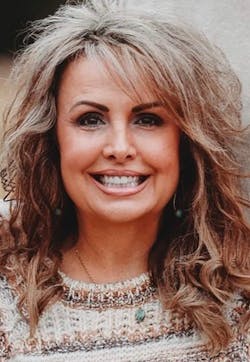Safety goals: How one plant achieved zero recordable incidents
Carolyn Goodner is Plant Manager for Klein Tools at its Fort Smith, AR manufacturing facility. Goodner has been at Klein Tools for almost four decades, beginning as a manufacturing manager and moving up to Plant Manager eight years ago. She prides herself on being a strong mentor for women interested in pursuing careers in manufacturing while also prioritizing safety for the staff on the ground at the factory. Goodner recently spoke with Plant Services chief editor Thomas Wilk about both of those aspects of her career.
CG I was the operations manager for 15 years, and I knew my role and my goals, and I was very good at my job, so I was hesitant on switching to a plant manager role. I will tell you, for 10 months, it was 14-hour days learning the plant manager’s role, ensuring that our employees didn’t see my concerns or any discouragement that I might have had about the role. I never displayed any negativity or concerns that perhaps would suggest maybe I wasn’t the right person to fill this role.
I just smile because when I look back, I just have to say I had a lot of people that stood with me and not against me. I think that helped me grow and be secure in this role that is usually male dominant. I’m self-motivated and encourage other women to believe in themselves and surround themselves with people that are loyal and respectful.
PS Your facility has an excellent safety record, and that was a priority of yours to implement. Could you tell me about that effort?
CG Yes, I’m so proud! When you hear “Klein Tools,” you naturally think quality. I don’t think people realize safety and quality goes hand in hand with our brand.
When we began our safety program our OSHA recordables rates were unacceptable. We understood human errors are probable, and we needed to develop processes and procedures for each work center and implement action immediately. We had 27 recordables in one year, so I was tasked with the challenge of reducing our recordables by half within a year.
I began reaching out to our occupational clinic, requesting the doctors and hand therapist visit our facility, take a tour to assist us with a reduction in recordables. We partnered with them, and we provided job descriptions for every job classification and over time developed job site analysis to lower the recordables. They visited our facility quite often. This took several months to implement. The occupational team visited every workstation and reviewed our set-ups ergonomically for best practices. We would move work-centers, we would change up work-centers, we needed to adapt and include the feedback from our employees.
We did that for many, many months. We had 25 employees arrive at the clinic and they created a baseline of things that assisted us when performing job tasks properly. We implemented the baseline, and we rolled it out to the production floor. We brought everybody together as a team and said, “we’re going to be completely transparent with everyone, this is a priority now.”
Once we established that, we continued to make improvements throughout this process. We provided 10 minutes for every employee upon arrival to perform stretches provided to us from the occupational team. The employees also received an additional 10 minutes of stretches after their lunch breaks. We did this for a year and a half, and we went from 27 recordables during that time down to four. Currently, Fort Smith has zero recordables and have been at zero for over 15 years, and we are currently working toward four million hours without a lost time accident.
PS Did other plant managers then come to you to observe what you had implemented, trying to duplicate that program at their plants?
CG They did. And not only did that occur, but we also have a nurse on-site at our corporate office. She’s visited our location many times and took back some of our past practices and implemented them at other locations. We are “One Klein Tools,” however it was nice to be the flagship and receive the recognition from other facilities. It’s great to see that we’re all on the same page with our safety programs reflecting successful results.
About the Author

Thomas Wilk
editor in chief
Thomas Wilk joined Plant Services as editor in chief in 2014. Previously, Wilk was content strategist / mobile media manager at Panduit. Prior to Panduit, Tom was lead editor for Battelle Memorial Institute's Environmental Restoration team, and taught business and technical writing at Ohio State University for eight years. Tom holds a BA from the University of Illinois and an MA from Ohio State University

